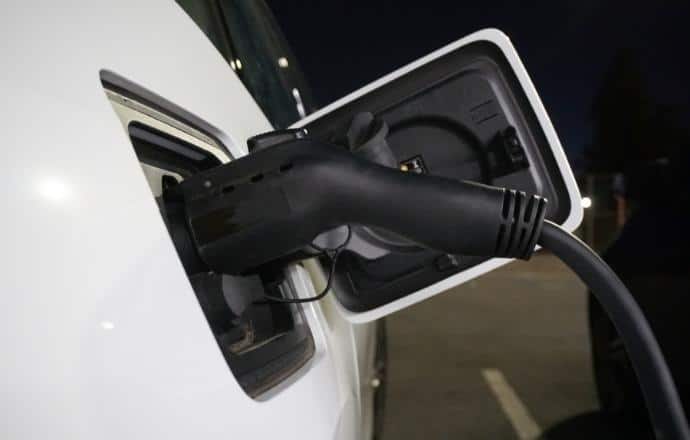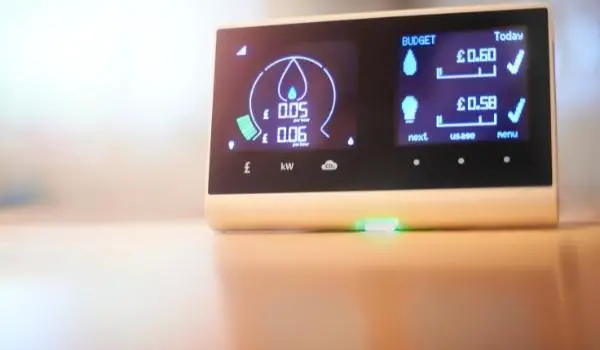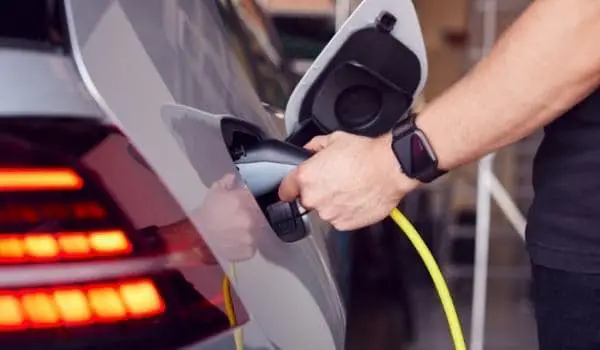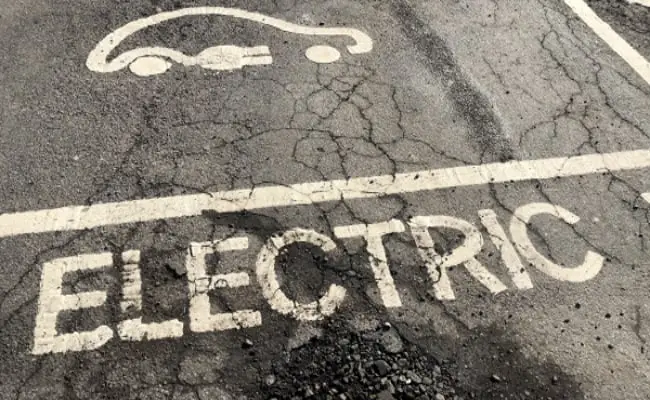Last Updated on July 8, 2022 by

We are often told that leaving a phone or other device constantly plugged in is not advisable, as it may wear out the battery and waste electricity. It is legitimate therefore to ask if the same is true of an electric vehicle (EV). Will leaving an EV plugged in and charging overnight lead to a reduction in battery efficiency? Once the car is charged, will it continue to draw electricity which is then wasted? Another associated question is whether leaving a vehicle charging all night is sufficiently secure, given that it may be parked on a driveway or on the street if no off-road spaces are available.
The short answer to all these questions is that EVs have been designed with overnight charging in mind, since on a domestic supply it generally takes 8-10 hours to charge to capacity. There are also other benefits of keeping the vehicle plugged in.
Does It Waste Electricity?
With a home charger, EV owners can take advantage of cheaper overnight electricity rates by charging during the hours of the night when there is less pressure on the grid and the rates are cheaper. EVs generally have some kind of Battery Management System which allows owners to apply different settings. Exactly what these settings are will vary from make to make, but most will allow you to only set charging hours at particular times of the day or night. Charging will then automatically stop out of these hours and start up when the time arrives. Some will allow charging only to take place when a particular tariff is in operation, so the battery will only take a charge when a cheaper rate is applicable.

When the battery capacity is approaching 100%, charging will automatically slow down, and then revert to “trickle charging” so that the battery remains at capacity but no excess electricity is drawn. So there is no need to unplug to ensure electricity is not wasted – that is factored into the design of the vehicle and the charge points, and can be set via the functionality of the app.
Does It Damage The Battery?
Batteries are designed to be compatible with slow charging (as well as fast and rapid charging), which will often take place overnight. The automatic switching to “trickle charging” will protect the battery from any kind of overcharging. Effectively, it is not possible to overcharge the battery.
Having said that, some advise that the best approach to preserve battery life is to try and keep it charged up between 30% and 80% at all times. Very high or very low charges cause more wear on the battery. Avoiding draining the battery entirely or charging it up to 100% all the time will keep it operating within this middle range. All of this varies depending on make and model, and it’s important to read and follow the user manual. It is generally possible to use the Battery Management System to charge up to say 80% and then stop. Taking a charge right up to 100% would be advisable if you are planning a long journey the following day, but if 80% or 90% will get you there, it may be better only to charge that far.

Some advise that keeping the car plugged in for long periods of time may degrade the battery, but not by enough to significantly impact on battery life, which is getting longer and longer as the technology develops. To weigh against this, there are some real advantages to keeping the vehicle plugged in, even when it isn’t actively taking a charge.
The Benefits of Staying Plugged In
Leaving a vehicle plugged in even when not charging is an option for those with home chargers. Some makes, including Tesla, recommend leaving the car plugged in, as this will enable it to dynamically monitor its own state and adjust accordingly. Some vehicles have security modes which use up very small amounts of energy all the time, and often there is a small heating or cooling system which protects the battery from extremes of temperature. Keeping it plugged in also enables you to make more use of the remote app to adjust the settings of the vehicle.

When an EV isn’t used for several days or weeks, leaving it unplugged may result in some battery drain. This is sometimes known as “vampire drain” or “phantom drain”. The extent of this will vary enormously depending on temperature, the age of the vehicle, and the make and model, as well as what settings the car is left on. It may not be very significant – some Tesla owners have experienced a drain of 1% a day, depending on whether sentry mode is applied or not. Other drivers have seen a 10% drop in battery over 21 days, for example.
On the other hand, leaving the car plugged in for a long time may have unexpected effects. In a Nissan Leaf, a supplementary battery is used to operate accessories in the vehicle, which is charged via the main battery. Some owners have found that this battery went flat even when the car was left plugged in. This should not, however, happen during a single overnight charge. Once again the owner’s manual is the place to turn to when deciding whether to leave it plugged in for a long period of time or not.
It is important to remember, though, that as the range and performance of EVs improve over time, it is not always essential to charge the battery every night. This is of particular value to anyone who is not able to install a home charger.
What About Public Charge Points?
With charge points that are found at “destinations” such as supermarket car parks, it is generally not practical to use these for overnight charging. Most are fast or rapid charge points and have been designed with the assumption that charging will take a few minutes or an hour or two, and then the car will be moved away to free up the space for someone else. In these places there may also be parking restrictions limiting how long a vehicle can be parked, or a ban on overnight parking.
Related: Guide to parking in EV charging spaces – https://yourautowants.co.uk/parking-ev-charging-spot/
However, many of the on-street charge points in residential areas are designed specifically for overnight charging. Lamp post chargers, for example, which make use of the electricity supply in the column of a lamp post, are generally slow chargers, because the supply is limited. It will take 8-10 hours for most EVs to take a full charge in this case. The expectation is that the vehicle will be left overnight and will be fully charged in the morning. Make sure, though, that you have all the permissions necessary to park: in a controlled parking area you may still need a permit to park there at all. The local council is a good place to research on-street charging and parking policies and restrictions.

If you are parking on the street and trailing a cable from your home electricity supply to the vehicle, it would be best practice to remove the cable as soon as the battery is sufficiently charged, to minimise the chance of it becoming an obstruction. This could be more important overnight when it is more likely someone might not notice it and trip. Charging overnight in this scenario may not be advisable. It is also a good idea to check with the local council about using a trailing cable, as their guidelines may not encourage it.
Staying at a public charge point beyond the necessary time can be inconsiderate for other users. Some apps have been tried where users can register and then “check in” to a particular charge point. This means that they can leave some information about how long they are expecting to need the space, which is helpful to others. However, these will only work when a large number of people are registered on the app. A system like this might work effectively with EV drivers in a particular street, for example, who are all using the same small number of local charge points. It might also be effective with charge points at a place of work.
What About Security?
An EV can be locked while charging, and left. The vehicle itself should therefore be just as secure as it is when parked normally. However, there have been some issues with cable theft. A charging cable will be worth at least £100 and sometimes a lot more, and if not secured could be tempting. There are ways of minimising the chances of this happening, such as using a cable lock or a regular padlock. It is also worth checking that your insurance covers cable theft and that you are complying with all the conditions of the policy.
Related: How to prevent EV charging cable theft – https://yourautowants.co.uk/how-prevent-ev-charging-cable-theft/
Conclusion
Unlike mobile phones and household equipment, which we are advised not to leave plugged in or “on standby”, an electric vehicle is designed to be plugged in and take a charge overnight. Keeping it plugged in also enables more functionality via the car’s app. Read the user manual, and follow the manufacturer’s instructions to make use of the cheapest electricity and extend the life of the car and the battery for as long as possible.
